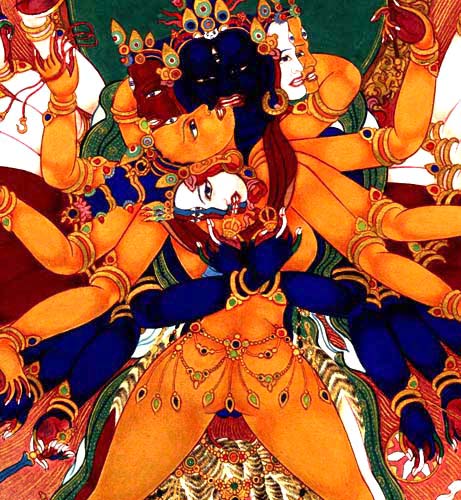| Tantrayana Buddhism climaxed
in the eleventh century and abruptly ended in thirteenth century in India,
succumbing largely to victorious Islamic armies. We might think that so
much time has passed from its beginning up to now, a thousand years, that
every deity we see depicted in these mandalas is simply frozen in time.
It is understandable that some people who regard an important mandala for
the first time may approach the design as if it were an inanimate archaeological
ruin. Interestingly, any right-minded observer can bring the mandala to
life. In fact, there are some fascinating parallels between the systems
we seen in these mandalas and modern computer network systems.
It seems like some of the
latest networking concepts were already expressed in the mandala tradition.
Most notable perhaps is that the mandala concept, like the Internet, is
decentralized. Deities can swap positions and functions on the Mandala
and still have the mandala function normally (as noted above with the surprising
substitution of Vairocana with Akshobaya). The word "mandala" means "circle"
in Sanskrit, and largely owing to this definition, mandalas are inherently
dynamic.
Furthermore, the great host
of deities who populate mandalas communicates through analogous correspondences.
They are different from one another and yet similar, like the nodes of
a network. There may be something fundamental to human psychology about
networks (even the brain is a network, after all) and mandalas merely reflect
this basic principle. |
